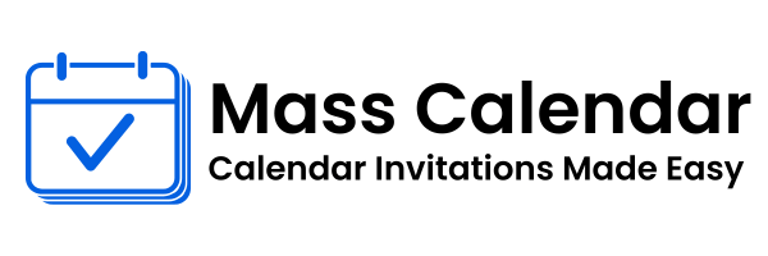Why Calendar Invites Matter More Than Ever in Today’s Digital Workplace
As meetings become more digital, calendar invites have transformed from simple schedule markers into critical touchpoints for team collaboration. Whether you're running a startup or part of a global enterprise, mastering how to send calendar invite Gmail users receive clearly and promptly is a professional must-have.
BLOG
7/30/20252 min read


As meetings become more digital, calendar invites have transformed from simple schedule markers into critical touchpoints for team collaboration. Whether you're running a startup or part of a global enterprise, mastering how to send calendar invite Gmail users receive clearly and promptly is a professional must-have.
Let’s explore why calendar invites are important, where professionals go wrong, and how to streamline your meeting scheduling process in Gmail.
What Makes Calendar Invitations So Important Today?
Calendar invitations act as virtual commitments. They serve several key purposes:
Synchronize availability across time zones
Set formal expectations for attendance
Provide logistics (e.g., links, locations, or call-ins)
Send reminders that reduce no-show rates
With so many remote teams working asynchronously, knowing how to send a calendar invite in Gmail allows leaders to maintain structure even when teams are dispersed.
The Basics of Sending a Calendar Invite in Gmail
A large portion of professionals still use email manually to remind attendees of upcoming meetings. However, Gmail offers integrated tools through Google Calendar that allow users to directly send meeting invite in Gmail while attaching relevant documents, meeting links, and notes.
When learning how to send a calendar invite Gmail offers, make sure to explore:
The “Add Guests” section
Time zone adjustments
Notification settings
Permissions (can guests modify, invite others, or see all details?)
Even seasoned users sometimes forget that Gmail also supports rescheduling, recurring events, and multiple calendar invite actions allowing professionals to manage more complex timelines.
Multiple Calendar Invites in Gmail: When and How
Sometimes, one invitation isn’t enough. When managing teams, projects, or multiple stakeholders, the need to send multiple calendar invites in Gmail becomes common.
Best practices for multiple calendar invites:
Group relevant stakeholders together instead of sending separate invites for overlapping topics
Use consistent event formatting so team members can search their calendars easily
Schedule buffer time between back-to-back meetings to improve attendance and focus
If you frequently send meeting invite in Gmail for regular team huddles or reviews, consider building templates or duplicating past invites to maintain consistency.
Calendar in Bulk and the Balance of Efficiency
Sending a calendar in bulk sounds like an ideal way to save time. However, overusing this approach without thought can harm participation. When planning to send calendar invite Gmail users receive in bulk, it’s important to:
Confirm recipients are all relevant
Avoid spamming users with non-essential meetings
Break large audiences into segments based on topic or function
Remember, while it's faster to send a calendar in bulk, users tend to engage more with well-labeled and purposeful invites.
Etiquette Tips for Sending Professional Calendar Invites
Here are a few simple but effective tips:
Avoid scheduling during off-hours: Always check the recipient’s local time.
Follow up professionally: If a recipient hasn’t responded, send a short email instead of re-inviting.
Include an opt-out option: Especially when sending bulk calendar invites.
Use descriptive subjects: “Weekly Sales Check-in” is better than “Meeting.”
Improving Meeting Culture through Better Invites
More than the technicalities of how to send calendar invite Gmail users understand, there’s a growing need to create a more thoughtful meeting culture. With burnout and meeting fatigue becoming common, professionals should aim to reduce unnecessary meetings and improve the quality of necessary ones.
Well-structured calendar invitations contribute to this shift giving people context, control, and clarity over their schedules.
Conclusion
Calendar invites are no longer optional. They’re a professional necessity that reflects your respect for others’ time. Whether you're figuring out how to send a calendar invite in Gmail or streamlining your weekly sync-ups, every calendar invitation you send is an opportunity to build stronger collaboration and communication.
MassCalendar.in
Send Bulk & Mass Calendar Invites Instantly
CONTACT
Meetings
+44 (0) 203 916 5117
© 2025. All rights reserved.
Help?
